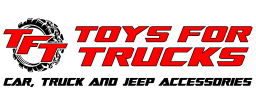MEANINGS
Camber Wear: Camber wear refers to when the outside or inside of the tread has significantly more wear than the center tread. Negative or positive camber causes this type of wear.
Camber: Camber is the angle, either outward or inward, of the tire when viewed from the front view of the vehicle. Positive and negative (outward and inward tilt respectively) are indicators that an alignment is needed. Contributions to camber misalignment can be worn ball joints, bearings and other wheel suspension associated parts.
Feathering: Tires become "feathered" when the tread is sharp on one side of the tire and smooth on the other. Typically, this is a sign of the toe alignment being poor.
Toe Alignment: The toe alignment utilizes a top view of your vehicle to determine if your tires turn outward or inward.
Toe In: Used in association with toe alignment. The headlights side of the tires point inward.
Toe Out: Used in association with toe alignment. The headlights side of the tires point outward.
Heel/Toe Wear: Heel/toe wear is encountered when the tread blocks on one side wear down quicker than the other in a circumferential direction.
Caster Angle: The caster angle is the angle of the steering axis viewed from the side of the vehicle. A negative caster has a steering axis tilt towards the front of the vehicle and a positive caster has the steering axis tilt towards the driver. The caster angle helps with the balance of cornering, steering and stability.
 |
WHY? Alignment is not just the adjustment of the wheels and tires, but also the adjustment of a vehicle's suspension. Proper alignment keeps your tires from wearing prematurely and unevenly and allows your tires to function as they are supposed to. WHEN NEEDEDThere are signs that can indicate that you need an alignment.
1. Your vehicle is pulling to the right or left 2. When driving straight, your steering wheel is off center 3. Uneven tread wear 4. You encounter steering wheel vibration |
